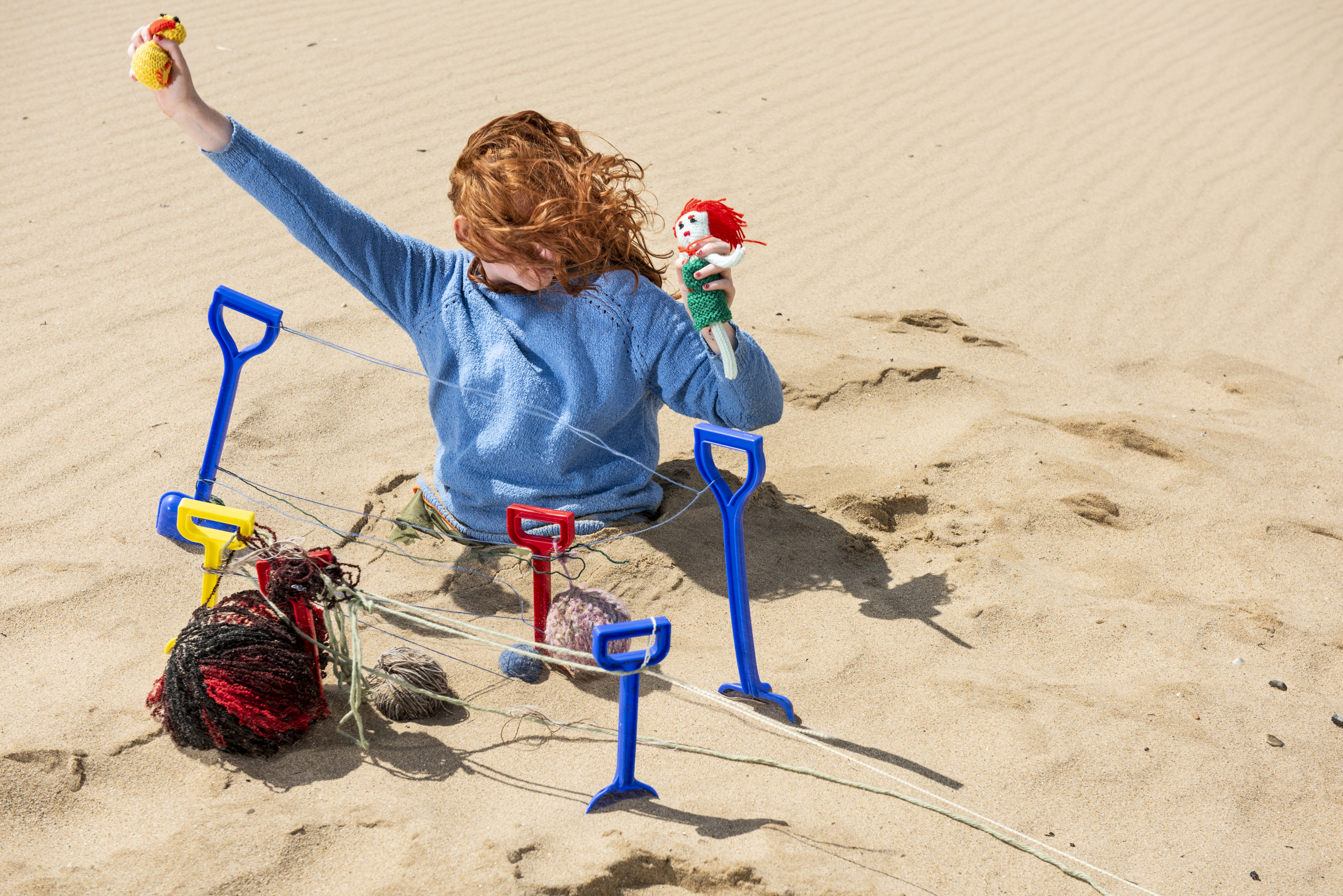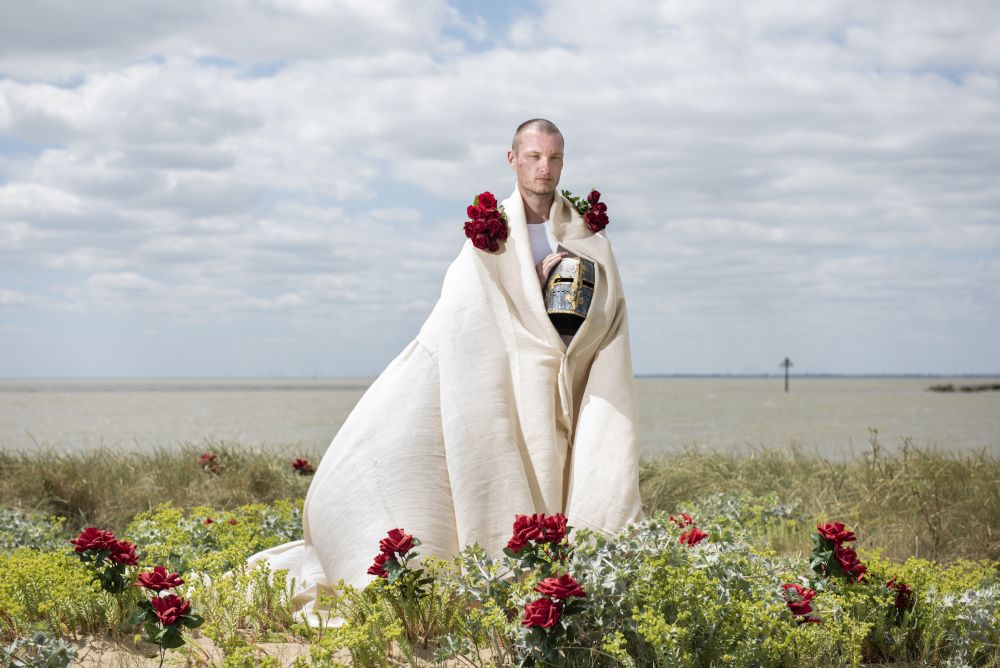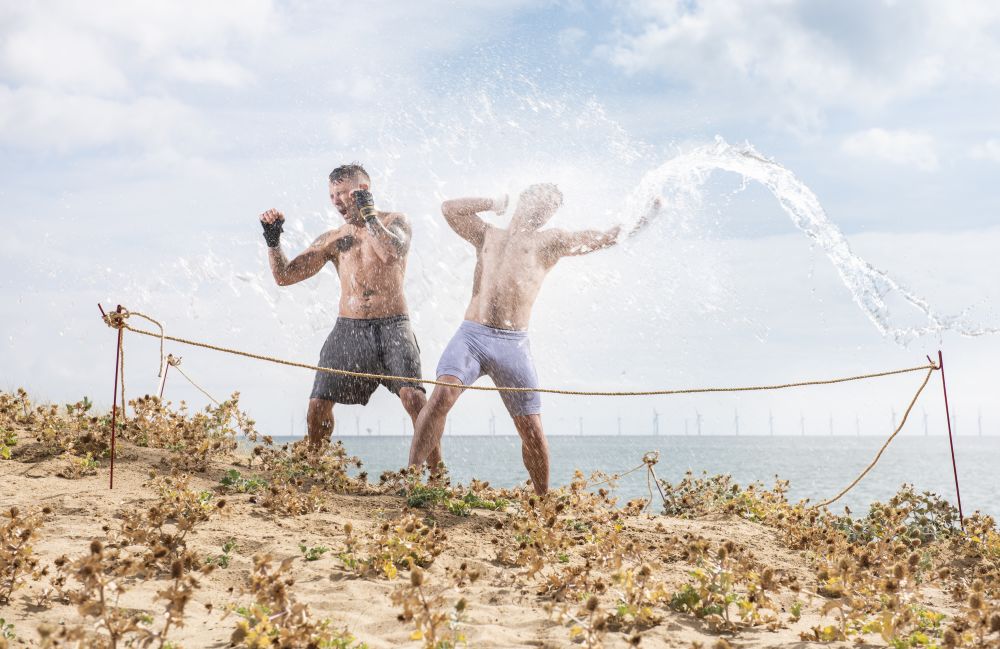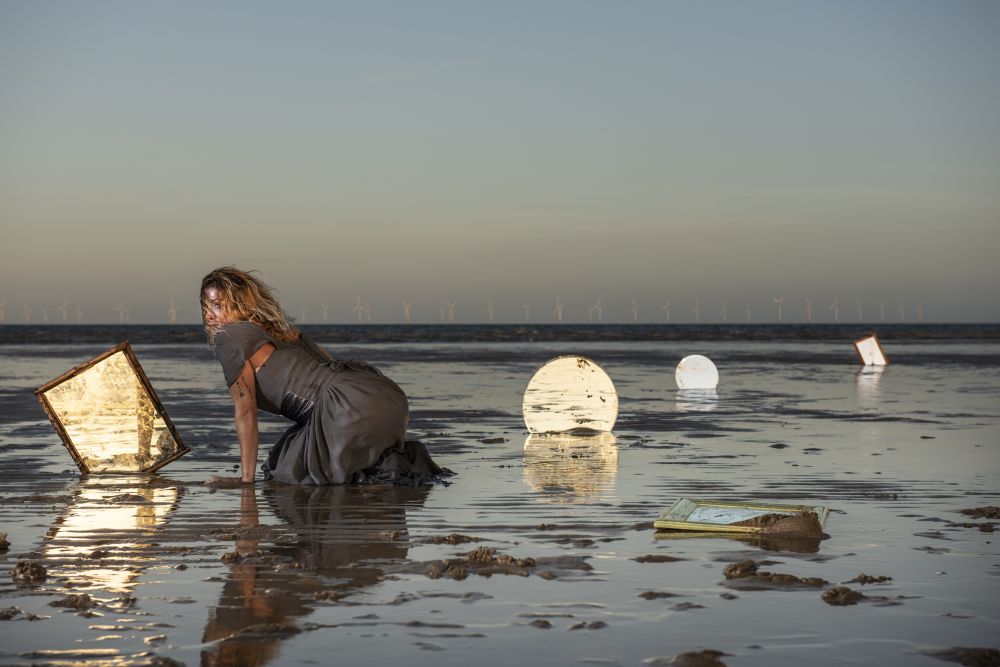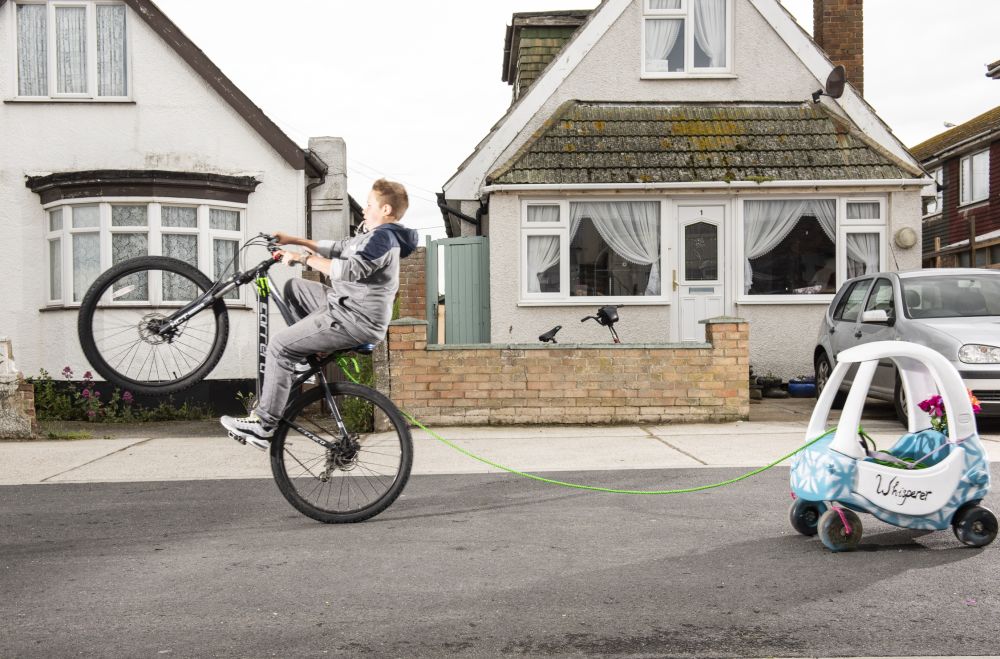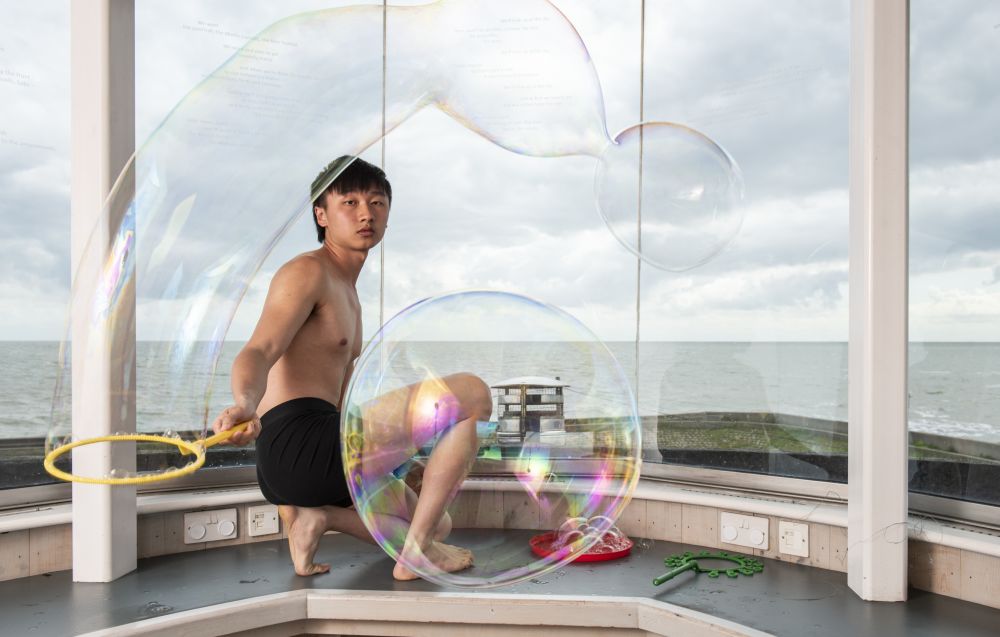While our buildings our closed, we delve into the exhibitions and projects we are missing out on in person. Here we take an in-depth look at I might not be the same but that’s not important which documents and explores work made by our BA Fine Art students while on residency in Jaywick, Essex.
In summer 2019, a group of BA Fine Art students took up residence in Jaywick. Over a period of three months, they stayed on-site, met local communities and tested and shared ideas. On their final day, the students co-opted a weekly cycling tour to show residents their work situated around the town: on the beach, at the top of the Martello Tower, at the bus stop and in the local Chinese restaurant. Curated by student Sarah Allen, the Window Galleries exhibition at the College I might not be the same but that’s not important documents the residency, showcasing the students’ projects as well as new work inspired by their stay.
The Jaywick project evolved out of conversations between staff in the Art programme and Essex Council. “The council were looking for new ways to work with the local community” explains Fine Art tutor Sarah Cole. “They were interested in how fine art strategies could be used to build and strengthen relationships. They wanted to explore whether, through spending time in Jaywick, we could surface a better understanding of the local cultures and creativity than what already exists there.” Throughout the first stages of the project, Cole worked with professional artist Mark Storor, who specialises in collaborative, community-led practice. Together they spent time in early 2019 meeting locals in Jaywick and laying the foundations for students to join them and learn how to work in a social, public context. “When we began the residency, the aims were two-fold: for students to make new work in response to their time in Jaywick and for Mark to develop a longer-term relationship with different people there.”
Mark Storor and Stephen King, The Usual
Between April and June that year, nine second-year BA Fine Art students visited and stayed in Jaywick. They each explored their practice in relation to the people and locale, developing work in collaboration with residents. Cole explains: “The starting point was unpacking what they thought they knew, getting them to explore the town and to generate conversations with strangers.” As student and exhibition curator Sarah Allen recalls: “On our first visit to Jaywick we were given a pink fishing net and a bag and were dropped off in various places around the town, allowing us to be seen and hopefully start to be accepted. We were not allowed to take photos or to talk to each other if we met. Instead, we had to have at least two conversations with other people in Jaywick.”
Based on these first experiences, each student set out following their own ideas, bringing their practice into play with different people. While walking around Jaywick and painting her journeys, Allen met a group called Inclusion Ventures who organised bike rides and activities for children who have been excluded from school. “They seemed very keen to get involved and in the end they were an integral part of my project,” explains Allen. “After discovering that cooking and food exchange were part of their activities, I began thinking of ideas around preparing and sharing food; domestic labour and food have always informed my practice.”

Allen set about organising workshops with the group in which the children would cast various objects: “After my initial thoughts of food, I began thinking about hands as a symbol of greeting, reassurance and friendship – holding hands, shaking hands. After some research and experimentation, I decided it was best to do an alginate hand casting class because it’s quick and there is instant gratification for the children, as they can take their cast away with them at the end.” Allen also cast various objects herself to be later baked into bread shapes – including a hat, a doll and a teacup. During the cycling art tour at the end of their stay, Allen donned the bread hat and took over a derelict area reserved for car boot sales, where she offered the bread to passing locals.

During her time in Jaywick, fellow student Lu Meng also staged interventions around the communal nature of food and drink. She set up a mobile Chinese tea ceremony station, performing it twice a day around the town. She recalls: “Occasionally there were people passing by who would sit down with me. I invited them for a cup of tea and to talk about whatever they felt like discussing.” Often, people would strike up conversations about cultural differences and ritual. At the end of the residency, Meng performed her ceremony in Sun Yau – the local Chinese takeaway – where people from the area came to drink tea and share stories. “The restaurant owner Mr Liu invited his family and friends to join us and we talked about the hybridity of Chinese and British tea culture, and what has changed in their lives since they moved there.”
During the residency, local pub Never Say Die generously offered their function room as a headquarters for the students to meet and undertake communal activities. They organised workshops and attended events, including meetings with the local Knit & Natter group and members of the Community Gardens. Each day, they used this as a place to gather together and to reflect on their activities with local residents. Speaking about the experience students gained from the project, Cole says:
“Being immersed in a new context, living in caravans and responding to the environment around them was an intense experience. The project enabled them to gain first-hand experience of working as social arts practitioners, developing a collective and personal sense of the ethics, opportunities and demands of working in this way.”
Jaywick student projects
While the experience was rewarding for students, the initial impetus was to build and strengthen relationships between the community. As Cole explains, “People in Jaywick have become wary of biased media attention and often feel judged. But our emphasis was on the act of listening – not just looking – of sharing, opening things up and being playful. It was important that we all lived there temporarily, that we got to know the place and showed how serious and committed we were to making work that had some meaning to them. We also worked with young teenagers who have been excluded from school and older people whose creativity and life experience informed the work as it evolved.
People are rightly tired of things being done to them, decisions being made for them and the sense that they are not being listened to. Good social artists don’t come with an agenda other than to see what’s possible, to keep the dialogue open.”
Reflecting on her output during the residency, Allen adds “This was never really about a final piece because being engaged in a public context is the learning. For me, it was about being in Jaywick and being receptive, not about academic research but about interaction.”

Now a year on, the Window Galleries exhibition sets out to explore and celebrate the work and research our students undertook. Led by Allen, the student group began with their interactions in Jaywick, expanding on and responding to them for the show. Even the title is inspired by the area – taken from a sign hung in Mr Liu’s restaurant. Nasl Smouna’s contribution to the exhibition is the costume she wore as part of her performance piece Bird of Paradise – which she staged in a borrowed boat on the beach. The costume includes a feather headdress which was gifted to Smouna by a local resident: “I felt that it reflected the themes we came across during the residency: borrowing, sharing, building communally. The costume articulated the relationships we built throughout the project, encapsulating some of the spirit of our collaborative experience.”

Chloe Vince’s project centred around conversation and the importance of word of mouth within communities. While in the town, she repurposed a toy car, rescued from the “murky depths of the community pond.” Along with the help of a few residents, Vince restored the car and then organised for it to be towed in a bicycle stunt display by a young local. Revisiting the work for the exhibition, she decided to print the image onto a beach towel: “Not only was it reusable and zero-waste, it is an object quintessential to British summertime and a nod to Jaywick’s seaside destination heritage; it’s a novelty item to celebrate an experience shared.”
Speaking about the exhibition, Vince notes that it “wasn’t about us trying to re-tell the stories of people in Jaywick, but instead about trying to resurface the experiences we all shared during the residency.” Similarly, Smouna describes the exhibition as “a celebratory archive of work”. Rather than simply exhibiting their final projects, our students have returned to their initial impetuses, continuing to draw out themes and topics from their interactions. They have absorbed the stories and lives of others, focusing on the productivity of shared encounters.
This project was generously funded by Essex Council in collaboration with BA Fine Art, artist Mark Storor, photographer Stephen King and the people of Jaywick. The project was developed during the summer of 2019, with work later reframed in the College Window Galleries in 2020. The project was led by Sarah Cole, with participating students Sarah Allen, Amelia Brewerton, Chloe Kelly, Lu Meng, Corbin Shaw, Naz Smouna, Chloe Vince, Danielle Willis and Tommie Xie.
